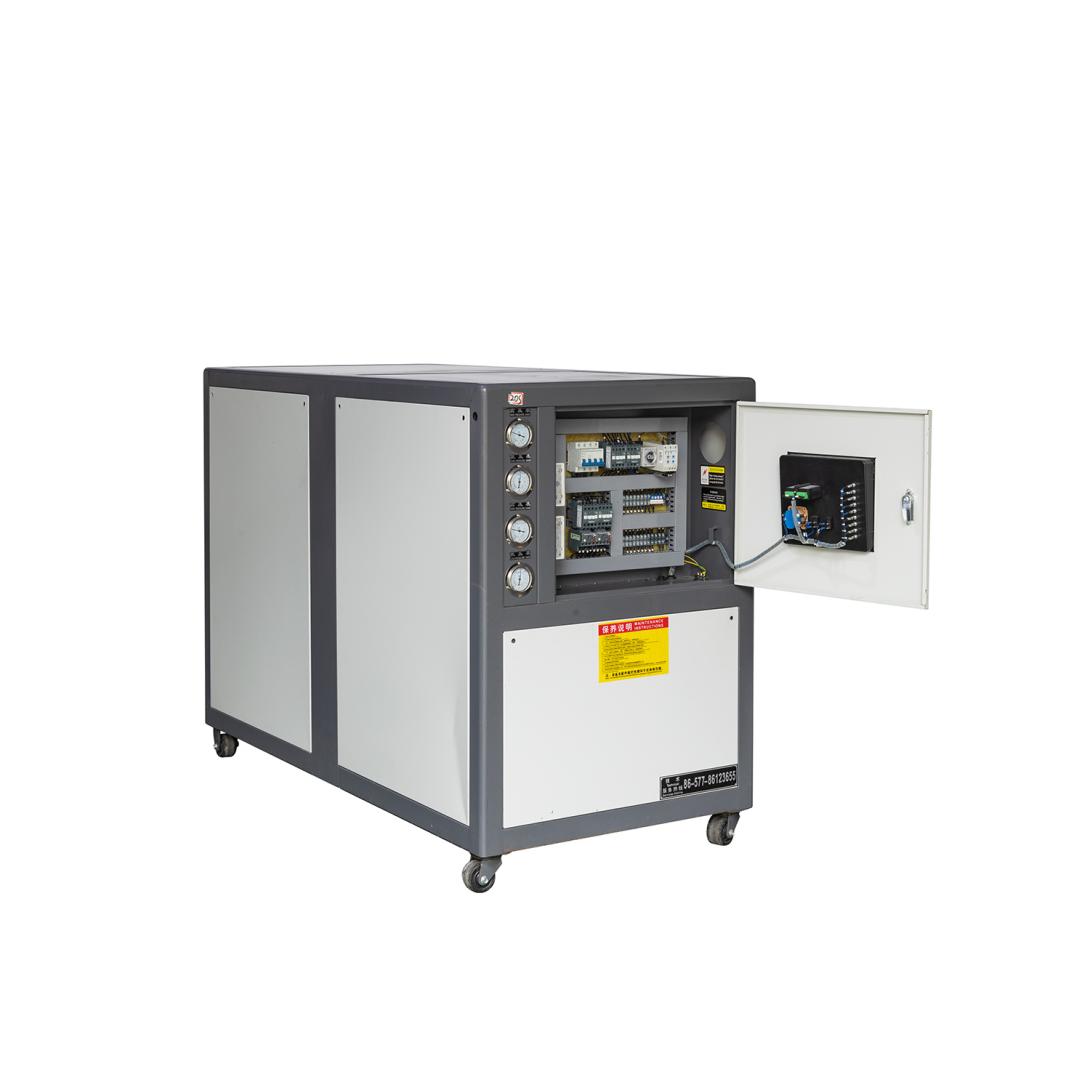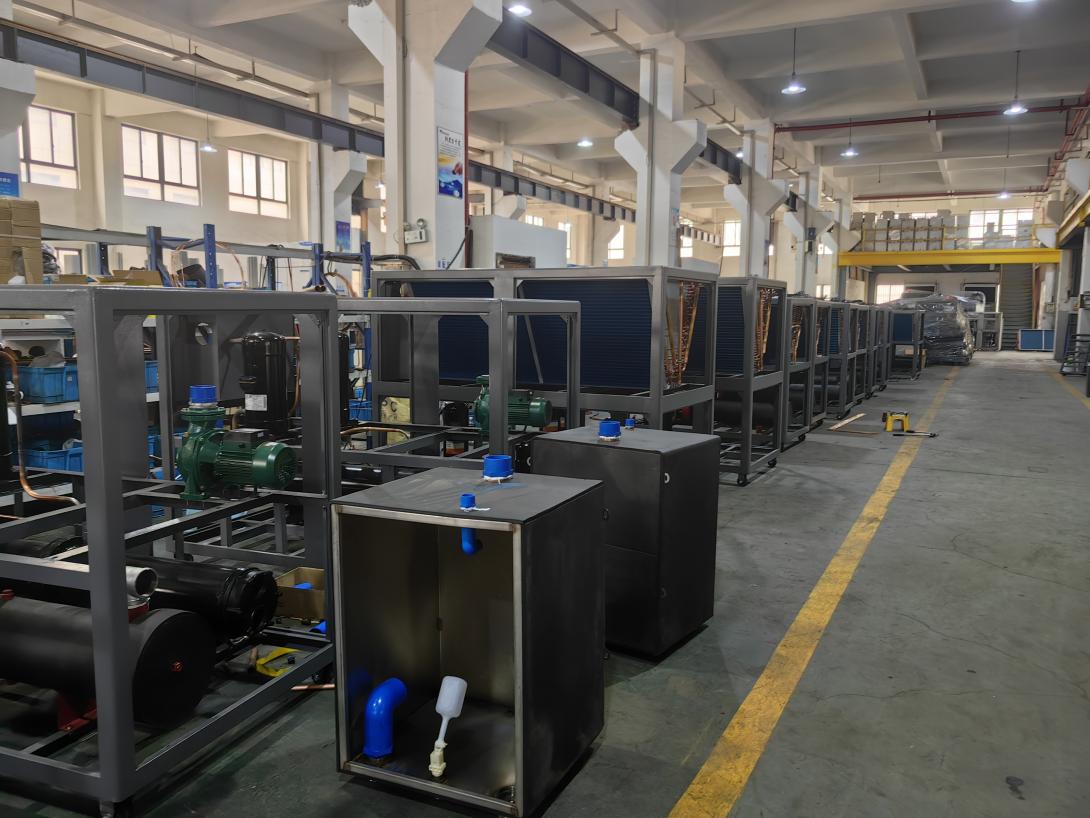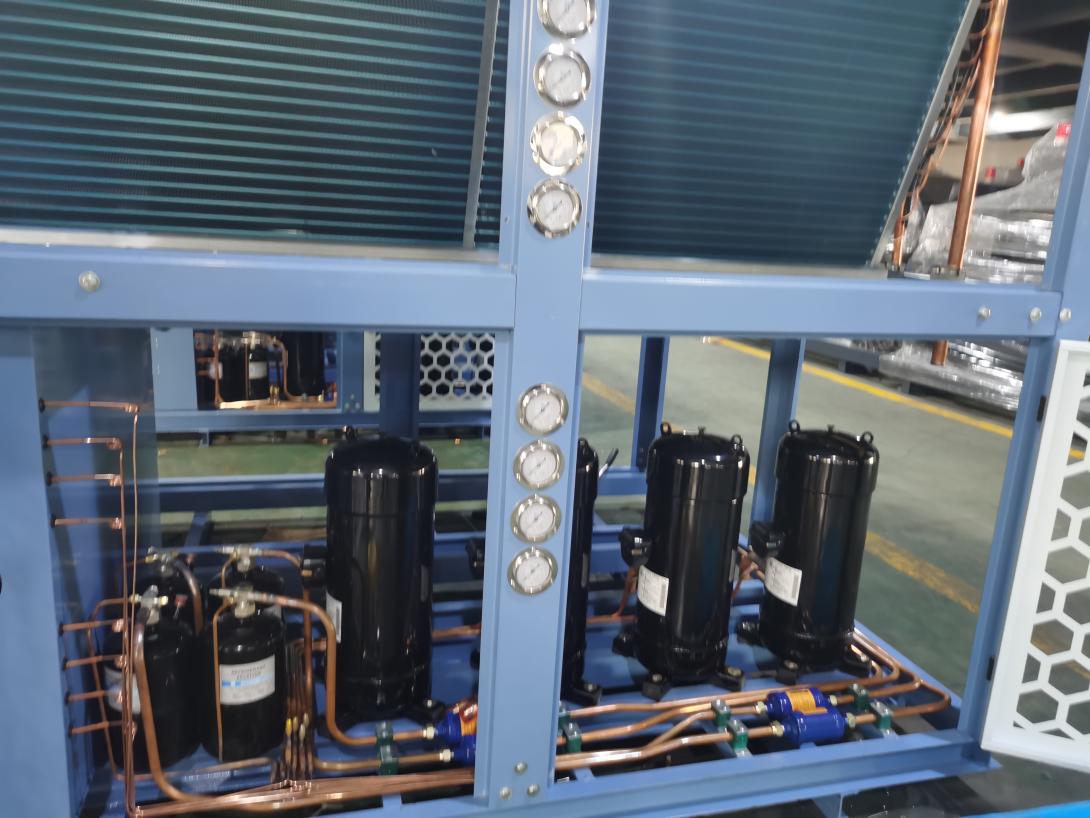


The difference between air-cooled and water-cooled:
1. Water cooling has an energy efficiency ratio 200 to 300 kcal higher than air cooling;
2. In terms of price, water cooling without a cooling tower is lower than air cooling;
3. In installation, water cooling needs to be included in the external circulating water pump of the cooling tower before the cooling water circulation system can be used: it consists of a cooling pump, cooling water pipeline, and cooling tower. The chiller unit performs heat exchange, and while cooling the water temperature, it will inevitably release a large amount of heat. The heat is absorbed by the cooling water, and the temperature of the cooling water increases. The cooling pump sends the heated cooling water into the cooling tower, where it exchanges heat with the atmosphere, and then sends the cooled water back to the chiller unit.
Main features:
Low noise, high temperature control accuracy, stable and reliable performance.
◆ Digital display of water temperature Temperature controller, precise, stable, and reliable.
◆ Equipped with automatic control and protection alarm devices, as well as fault signal output.
The water temperature and flow can be adjusted as needed
◆ Easy to operate, capable of long-term continuous work
◆ All stainless steel water tank and water pump The expansion valve automatically throttles.
◆ Adopting efficient shell and tube design to increase heat dissipation area.
◆ Adopting original high-efficiency scroll compressor, safe and energy-saving, low noise
Equipment main structure:
1. Rack/water tank/shell compressor/shell evaporator/filter/pressure controller
2. High and low pressure gauge/constant temperature control/water-cooled condenser pipeline system Electrical control system
Material selection and characteristic description:
1. The rack is made of Q235A square steel and the outer shell is made of A3 sheet metal, with secondary spraying of colored paint;
2. The air conditioning unit is a fully enclosed compressor, and the temperature controller is a digital temperature controller;
3. Other major electrical components are of high quality;
4. Adopt water-cooled shell and tube heat exchanger.
The refrigeration system of a chiller unit consists of four basic parts: compressor, condenser, throttle, and evaporator. Connect the four major components in a certain order using copper pipes to form a closed system, which is filled with a certain amount of refrigerant.
The compressor sucks in low-temperature and low-pressure Freon gas from the evaporator, compresses it into high-temperature and high-pressure Freon gas, and then flows through a thermal expansion valve (capillary tube), throttling it into a low-temperature and low-pressure Freon liquid two-phase object. Then, the low-temperature and low-pressure Freon liquid absorbs heat from indoor air in the evaporator, and the cycle of compression condensation throttling evaporation is repeated.
